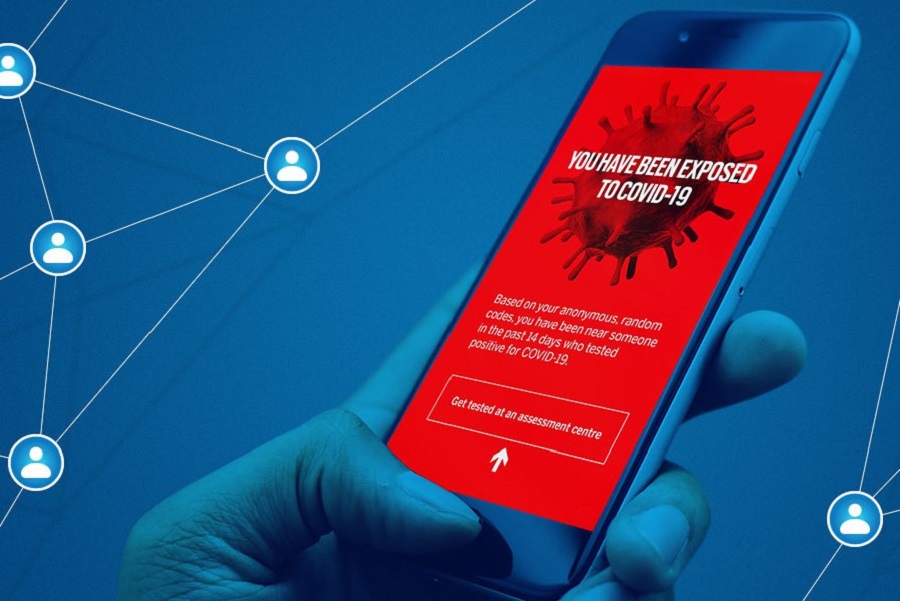Putting CT apps to the test
A new digital tool developed at Western assesses privacy and effectiveness of contact tracing apps
A NEW DIGITAL tool developed by a team of Western University computer scientists performs a digital deep dive on the near-endless stream of contact tracing (CT) mobile apps currently available on the market to evaluate their effectiveness and, more importantly for most, their privacy thresholds.
Computer science professor Anwar Haque says using the Western-built digital tool will inform national and provincial policymakers as they make tough decisions about the best apps to choose for protecting Canadians against Covid-19.
CT is a primary means for public health officials to limit the spread of infectious diseases like Covid-19. It helps identify and isolate close contacts who have been exposed to someone infected with the virus and helps break the chain of human-to-human transmission. Some key medical initiatives are also facilitated by CT, including monitoring for symptoms, priority testing of potential cases, and providing medical advice and treatments as appropriate.
Traditionally, CT is largely a manual process, where infected persons are interviewed by human agents to identify close contacts. This slower system struggles to withstand the rapid spread of Covid-19 in terms of time, human resources and quality of detection. To automate and speed up the process, a myriad of smartphone-based CT apps has been built but privacy risks and effectiveness are a constant concern.
The new Western evaluation tool, created by Haque and Western research associate, Rashed Nekvi, generates a privacy score for each of these apps by comparing its features against the standard principles taken from the federal privacy laws of Canada and the internationally agreed upon privacy guidelines from the Organization for Economic Cooperation and Development.
“We have observed several technology-based innovations to enhance and augment public health efforts for contact tracing, including digital proximity detection, online dashboards and mobile health apps,” says Haque, a recognized industry expert in wireless networks, cyber security and smart services and applications. “Our analytical tool automates the assessment of a number of privacy preservation features and assigns a score to how well the app can secure the personal data of its users.”
Currently, the tool assesses apps in ways most relevant to Canadians, however, it may also be applied globally to CT software programs in international markets.
According to the World Health Organization, there are currently no established methods for assessing the effectiveness of digital proximity tracking apps and a tool to evaluate their effectiveness is needed. It’s a call to arms for the new Western-built tool, says Haque.
“People are far less likely to voluntarily download a CT app on their phone due to fears of surveillance,” he says. “However, the wide adoption of a CT app by the world’s population is necessary to have a meaningful impact in the fight against Covid-19.”

Photo: Anwar Haque
With only 4.7 million downloads – approximately 12 per cent of Canada’s population – the Covid Alert app isn’t being used by enough people to be fully effective.
“This new tool could play a crucial role not only in supporting the national policymakers as they select the right CT apps to employ but also in increasing the population’s confidence in those apps as it relates to privacy and effectiveness,” observes Tamer Mohamed, business development manager at WORLDiscoveries, a technology transfer and business development partnership of Western, Robarts Research Institute and Lawson Health Research Institute. “If used properly, this new evaluation tool should elevate CT app usage in order to minimize the spread of Covid-19.”
Upgrading mobile networks across Canada to 5G – like the Bell advanced 5G research network coming to Western – is also going to have significant implications for digital contact tracing, says Haque.
“This tool is well equipped to operate in the new 5G world,” says Haque. “Speed, reliability and enhanced security features are just few examples of 5G technology improvements coming to Western, across Canada and around the world.”
While the core design for most CT apps are the same, most vary on underlying methods and policies for proximity detection, organization of data, information collection, use and sharing. This variety presents a degree of privacy risk and concerns about effectiveness – and these two priorities often have opposing effects, meaning the riskier ones are more effective and vice versa.
The Western tool exhaustively examines the inner workings of CT apps beyond commonly discussed aspects like a centralized or decentralized approach to data storage and whether or not the software is open source (publicly accessible). It also scrutinizes such features as the level of cyber-security, trans-border and inter-platform operability, and anonymity of data.
Another major offering is analysis of each app that policymakers or software developers might focus upon to improve effectiveness and privacy preservation.
“Knowing the scores on the privacy scale, as well as on the effectiveness scale, is a great guide for policymakers and developers to analyze, comprehend and correct these products that are crucial during outbreaks like the Covid-19 pandemic,” says Haque. ![]()


